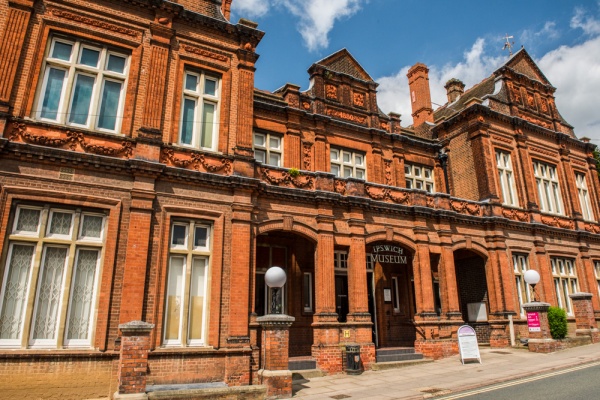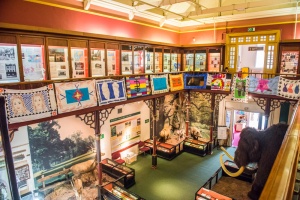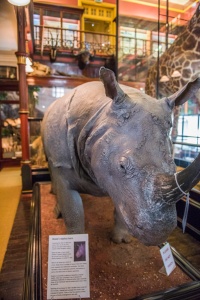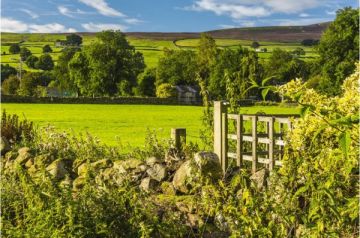
The Ipswich Museum is housed in a historic Victorian building on High Street, close to the centre of Ipswich and easily reached on foot from other major visitor attractions. The museum is home to displays on culture, history and the natural heritage of East Anglia.

first floor gallery
History
The museum was founded in 1846, with a focus on natural history. It was very consciously class-based, aiming to educate the lower classes. The major funding for the new museum came from the Ransome family, wealthy Quakers who ran a successful engineering company. Over 60 scientists contributed, all with the aim of social improvement for the working classes.
Prince Albert became the museum's patron in 1851 after a royal visit. The natural history exhibits wee launched just prior to the publication of Charles Darwin's Origin of Species, and the second president of the Museum was Rev Professor John Henslow, who had been Darwin's mentor at Cambridge University.
By 1881 the museum had outgrown its original headquarters on Museum street, and a new premises was erected on High Street, with space for the museum and the neighbouring Schools of Art and Science. Both museum and schools were managed by the Ipswich Corporation and the money was raised by public subscription. The premises were extended to provide an art gallery and new museum galleries by 1900.

The museum gradually extended its focus, adding collections of archaeology from across Suffolk. In 1918 the Ogilvie family donated a large collection of stuffed birds. More stuffed animals followed, including African animals, a giraffe, and a rhinoceros.
The rhino proved popular with schoolchildren, who dubbed it Rosie. Emile Clement donated a collection of Western Australian aboriginal objects, and by the interwar years the museum was also collecting historic photographs and documents.
What to See
Recent additions include an exhibit on the Ipswich Hoard, a large find of Saxon gold objects. The originals are in the British Museum, but the museum holds exact copies.
Galleries include Natural History, the Ogilvie British Bird Gallery, Suffolk Wildlife, British Mammals, and Suffolk Geology. There is a special exhibit on the Saxon finds from Sutton Hoo, not far from Ipswich, as well as a regular program of changing exhibits. When we visited these included a look at Ipswich during WWII.
One of the most popular exhibits is a life-sized woolly mammoth. The British Mammals gallery houses Victorian dioramas of animals in their natural environments, while the Suffolk Geology gallery has fossils including the teeth of the extinct giant shark Megalodon. The Natural History gallery includes exotic foreign animals arranged by their zoological classification. Included are the first examples of gorillas ever seen in Britain. One highlight is a large African diorama built in 1906.
One exhibit that really caught my eye was the Wickham Market Hoard, a collection of 840 gold coins from around AD 15, discovered by metal detectorists. The coins, or 'staters' were minted by the Iceni tribe, some 55 years before their queen, Boudicca, rose in revolt against the Romans.
Another interesting exhibit was The Broke Cup, a silver cup given to Captain Philip Bowes Vere Broke by the Free and Easy Club of Ipswich. Broke was commander of the Shannon during the War of 1812, when he captured the heavily armed US Chesapeake in 15 minutes. He became a celebrity after the battle, and was given many honours, including this ornate cup, engraved with details of his military success.
Visiting
The museum is well signposted and easy to reach on foot from the centre of Ipswich. I suggest allowing at 60-90 minutes to really explore all that it has to offer.
Ipswich Museum Prices
The museum is free to enter. It is operated by the Colchester and Ipswich Museums group, who offer free admission to all their museums in Essex and Suffolk.
I quite enjoyed the museum; it is large enough to be full of interest, yet small enough to be enjoyable without being exhausting.
About Ipswich Museum
Address: High Street,
Ipswich,
Suffolk,
England, IP1 3QH
Attraction Type: Museum
Website: Ipswich Museum
Location
map
OS: TM160448
Photo Credit: David Ross and Britain Express
HERITAGE
 We've 'tagged' this attraction information to help you find related historic attractions and learn more about major time periods mentioned.
We've 'tagged' this attraction information to help you find related historic attractions and learn more about major time periods mentioned.
Historic Time Periods:
Find other attractions tagged with:
NEARBY HISTORIC ATTRACTIONS
Heritage Rated from 1- 5 (low to exceptional) on historic interest
Ipswich, St Mary le Tower Church - 0.2 miles (Historic Church) ![]()
Ancient House - 0.2 miles (Historic Building) ![]()
Pykenham's Gatehouse - 0.3 miles (Historic Building) ![]()
Ipswich, St Lawrence Church - 0.3 miles (Historic Church) ![]()
Christchurch Mansion - 0.3 miles (Historic Building) ![]()
Ipswich, St Stephen's Church - 0.3 miles (Garden) ![]()
Ipswich Unitarian Meeting House - 0.3 miles (Historic Church) ![]()
ipswich, St Peter by the Waterfront - 0.5 miles (Historic Church) ![]()










